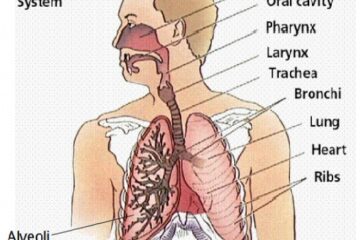Nervous Tissue
Nervous Tissue
The nervous tissues are specialized with no intercellular space. They are found in the brain, spinal cord, and nerves. These are the main components of the nervous system. The nervous system function to regulate and controls bodily functions. The nervous system consisting two parts- Central Nervous System and the Peripheral Nervous system (We will read about it in a separate post)
Functions of Nervous Tissue
These tissues are responsible for the coordination and controlling of many body activities by stimulating muscle contraction, creating awareness of the environment, and also plays important role in emotions, memory, and reasoning.
These tissues are devoid of the power of division and regeneration. They form together with the nervous system of animals. Nervous tissues are able to communicate with each other by the way of electrical impulses.
Composition of Nervous Tissue
The nervous tissue is composed of the following elements:
Ependymal cells – These cells line the cavity of the brain and spinal cord
Neurons – These are also called nerve cells, the neurons are with specialized features that allow them to receive and facilitate nerve impulses, or action potential.
Structure of neurons:
- The neuron structure consists of dendrites, cell body – Soma, nucleus, axon, synaptic buttons, Nissl’s granules, neurilemma, and nodes of Ranvier.
- The large cell body – Soma consists of cell projections called dendrites and axons.
- Dendrites are thin, branching projections that receive electrochemical signaling (neurotransmitters) and are responsible for the change in Voltage of the cell.
- Axons- These are long projections that carry action potential away from the cell body towards the next neuron.
- Synaptic cleft– the bulb-like end of an axon, called the axon terminal, is separated from the dendrites of the following neuron by a small gap, which is called a synaptic cleft.
Classification of neurons:
The neurons are classified functionally, structurally, and on the basis of the presence and absence of myelin sheath:
Functional classification of neurons:
- Sensory neurons (receptor/afferents): Relay sensory information (nerve impulse) from PNS to CNS.
- Motor neurons (effector/ Efferent): Relay on action potential out of the CNS to the proper effector (muscles, glands)
- Interneurons: These cells form connections between neurons and the processes are limited to a single local area in the brain or spinal cord.
Structural Classification:
- Unipolar brush cells: These are excitatory glutamatergic interneurons consisting of a single short dendrite terminating in a brush-like tuft of dentrioles. These cells are found in the granular layer of the cerebellum.
- Pseudo-unipolar neurons: These are sensory neurons that have one process which splits into two branches, forming the axon and dendrite.
- Bipolar neurons: These sensory neurons comprise two processes coming off the soma, one dendrite and one axon
- Multipolar neurons: Have 3 or more processes coming from the soma (the cell body). They are the major neuron type in the CNS and include interneurons and motor neurons.
Classification on the basis of Myelin Sheath
- Myelinated
- Non-myelinated

Neuroglial cells– These are also called glial cells. Neuroglial cells are non-neural cells found in the central nervous system (CNS) and Peripheral nervous system (PNS).
- These cells do not produce electrical impulses.
- They function to maintain homeostasis, form myelin in the PNS, and Provide support and protection for neurons. They are smaller than neurons and vary in structure according to their function
Types of Neuroglia–
- four types of neuroglial cells in CNS – astrocytes, microglial cells, ependymal cells, and oligodendrocytes.
- Two types of neuroglial cells in PNS – are Satellite cells and Schwann cells.
Three layers of Connective tissue surrounding nerve cells:
- Endoneurium: Each nerve axon or fiber is surrounded by the endoneurium which is also called the channel or sheath.
- Perineurium: Each nerve Fascicle contains one or more axons, and is enclosed by the perineurium, a connective tissue having a lamellar arrangement in seven or eight concentric layers. This plays a very important role in the protection and support of the nerve fibers and also serves to prevent the passage of large molecules from the epineurium into a fascicle.
- Epinneurium: It is the outermost layer of dense connective tissue enclosing the (peripheral) nerve

Peripheral nerve tissue
You can also read:
Reference: https://en.wikipedia.org/wiki/Nervous_tissue
Thank you 🙂



1 Comment
Classification of Animal Tissues - PCSSTUDIES - Biology - · July 2, 2021 at 2:59 pm
[…] Neural tissue/ Nervous tissue […]